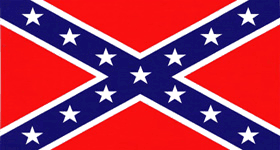 |
Civil War Battles |
|
State War Records |
| AL - AK - AZ - AR - CA - CO - CT - DE - FL - GA - HI - ID - IL - IN - IA - KS - KY - LA - MA - MD - ME - MI - MN - MS - MO - MT - NE - NV - NH - NJ - NM - NY - NC - ND - OH - OK - OR - PA - RI - SC - SD - TN - TX - UT - VT - VA - WA - WV - WI - WY |
The Battle of Deep Bottom (First)
July 27-29, 1864 in Henrico County, Virginia
 |
|||||||||||||||||||||
|
As a diversionary operation to assist the scheduled July 30th detonation of the Petersburg mine at the "Battle of the Crater", Lt. Gen. Ulysses S. Grant ordered a surprise attack north of the James River, commiting to the secret movement Maj. Gen. Winfield S. Hancock's II Corps and 2 cavalry divisions under Maj. Gen. Philip H. Sheridan. Grant intended to divert Confederates from the Petersburg lines to the north side of the James River. If the operation succeeded, Sheridan was to enter Richmond or raid the Virginia Central Railroad. Rumors of this Union thrust north of the James forced Gen. Robert E. Lee to send Maj. Gen. Joseph B. Kershaw north on the 23rd.
During the night of the 26th, Hancock's infantry filed across the James while Sheridan's cavalry trailed. The Union corps moved into a bridgehead held by a division of the X Corps. On the morning of the 27th, Hancock's veterans advanced on the New Market and other roads toward Chaffin's Bluff. Leading the march was the brigade of Brig. Gen. Nelson A. Miles, Brig. Gen. Francis C. Barlow's division. Near Bailey's Creek, Miles charged advanced Confederate outposts, routing the Confederate infantry and capturing 4 20-lb. Parrot cannon.
The Union soldiers pursued to where the New Market Road crossed Deep Bottom Run. Suddenly, the Confederate lines west of the creek erupted in rifle fire. The intensity and amount of the Confederates resistance was unexpected. Two solid, veteran Confederate divisions manned the works, under Maj. Gens. Cadmus M. Wilcox and Kershaw. When Hancock's attacks exploded that morning, the Confederates were ready.
When Barlows' advance stalled, Kershaw launched a counterattack that held the Federals east of the creek. The fighting filtered into sporadic skirmishing as the Confederates could not coordinate efforts. Confederate headquarters was a center of confusion and uncertainity. Lt. Gens. Richard H. Anderson, commander of the I Corps, and Richard S. Ewell, commander of Richmond's defenses, could not agree on who held senior command authority.
Sheridan, meanwhile, moved his 2 cavalry divisions northward behind Hannock's front. Supported by a cavalry division from the Army of the James, Sheridan probed the Confederate lines on the Darbytown road. Hancock shifted 2 infantry divisions to Sheridan's front. The cavalrymen charged, securing some ground, but could not advance any farther. Maj. Gen. Henry Heth's Confederate division arrived to bolster the works before Sheridan.
Grant arrived during the afternoon and was also surprised by the numbers of Confederate defenders. Grant ordered for the next day an envelopment of the Confederate northern flank to disengage the cavalry for its raid. About 10:00 A.M. on the 28th, however, Kershaw attacked Sheridan's troopers. The dismounted cavalrymen, armed with repeater rifles, repulsed the charge, counterattacked, and captured 300 Confederates and 2 battle flags. An infantry division replaced the cavalrymen, who withdrew to the New Market Road, where the Confederates again assaulted the troopers. With the Confederates sealing the avenues of advance, Sheridan's raid was abandoned.
On the 29th, the Federals recrossed the river, back to the Petersburg trenches. Grant succeeded in drawing Confederate forces from the beseiged city, but little else. Lee's swift reaction prevented Sheridan's raid, an operation that could have damaged the Confederacy.
